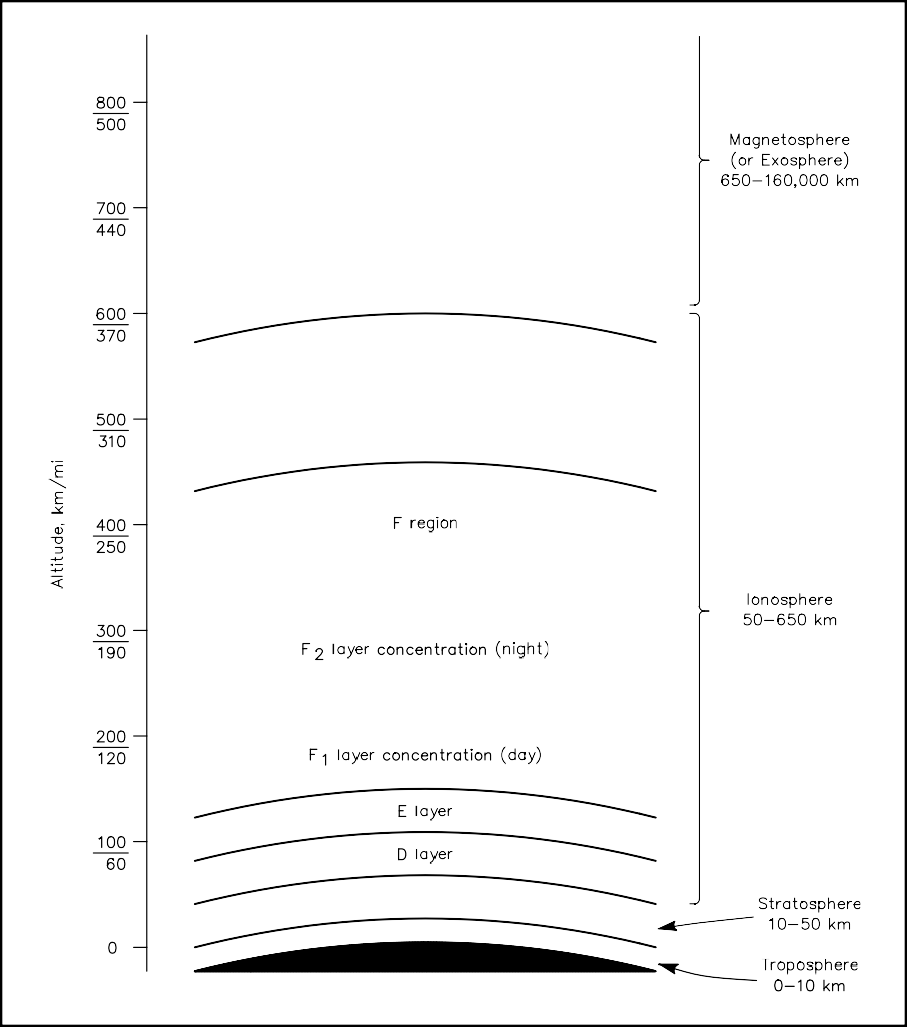Structure of the Earth’s Atmosphere
The atmosphere, which reaches to more than 600 km (370 mi) altitude, is divided into a number of regions, shown in Fig 21.6. The weather-producing troposphere lies between the surface and an average altitude of 10 km (6 mi). Between 10 and 50 km (6 and 30 mi) are the stratosphere and the imbedded ozonosphere, where ultraviolet absorbing ozone reaches its highest concentrations. About 99% of atmo- spheric gases are contained within these two lowest regions.

Fig 21.6—Regions of the atmosphere.
Above 50 km to about 600 km (370 mi) is the iono- sphere, notable for its effects on radio propagation. At these altitudes, atomic oxy- gen and nitrogen predomi- nate under very low pressure. High-energy solar UV and X-ray radiation ionize these gases, creating a broad region where ions are created in relative abundance. The ionosphere is subdivided into distinctive D, E and F re- gions.
The magnetosphere begins around 600 km (370 mi) and extends as far as 160,000 km (100,000 mi) into space. The predominant component of atmospheric gases gradually shifts from atomic oxygen, to helium and finally to hydro- gen at the highest levels. The lighter gases may reach es- cape velocity or be swept off the atmosphere by the solar wind. At about 3,200 and 16,000 km (2000 and 9900
mi), the Earth’s magnetic
field traps energetic electrons and protons in two bands, known as the Van Allen belts. These have only a minor effect on terrestrial radio propagation.
